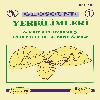GNSS Gözlem Süresine Bağlı Deformasyon Parametrelerinin Kestirimi
Bu çalışmada, GNSS ölçme süresinin deformasyon parametreleri (yer değiştirme, hız ve gerinim parametreleri) üzerindeki etkisinin araştırılması ve buna bağlı olarak doğruluk ölçütlerinin belirlenmesi amaçlanmıştır. Bu amaç kapsamında, TUSAGA-Aktif ağına ait 11 GNSS istasyonunun 2012.63 – 2017.63 yılları arasındaki 6 periyot gözlem verisi ölçme süresine (4, 6, 8, 12, 24 saat) bağlı olarak Bernese v5.2 yazılımı ile ITRF-08 referans sisteminde değerlendirilip istasyonlara ilişkin deformasyon parametreleri belirlenmiştir.
Anahtar Kelimeler:
GNSS, yer değiştirme vektörü, hız, gözlem süresi, gerinim parametreleri
___
- Akarsu, V. (2012). Gözlem süresinin GPS Noktası hızlarının belirlenmesine olan etkisinin araştırılması, Doktora Tezi. İTÜ Fen Bilimleri Enst., İstanbul.
- Betti, B., Biagi, L., Crespi, M., & Riguzzi, F. (1999). GPS sensitivity analysis applied to non-permanent deformation control networks. Journal of Geodesy, 73(3), 158-167.
- Brunner, F. K. (1979). On the analysis of geodetic networks for the determination of the incremental strain tensor. Survey Review, 25(192), 56-67.
- Dach, R., Lutz, S., Walser, P., & Fridez, P. (2015). Bernese GNSS Software Version 5.2. User manual. Astronomical Institute, University of Bern, Bern.
- Davis, J. L., Prescott, W. H., Svarc, J. L., & Wendt, K. J. (1989). Assessment of Global Positioning System measurements for studies of crustal deformation. Journal of Geophysical Research: Solid Earth, 94(B10), 13635-13650.
- Demir, D. O., & Dogan, U. (2014). Determination of crustal deformations based on GPS observing-session duration in Marmara region, Turkey. Advances in Space Research, 53(3), 452-462.
- Demir, D. O. (2015). 23 Ekim 2011 (Mw=7.2) Van depreminden kaynaklanan kabuk deformasyonlarının jeodezik yöntemlerle araştırılması, Doktora Tezi. YTÜ Fen Bilimleri Enst., İstanbul.
- Dogan, U., Demir, D. O., Cakir, Z., Ergintav, S., Ozener, H., Akoglu, A. M., ... & Reilinger, R. (2014). Postseismic deformation following the Mw 7.2, 23 October 2011 Van earthquake (Turkey): Evidence for aseismic fault reactivation. Geophysical Research Letters, 41(7), 2334-2341.
- Dogan, U., Oz, D., & Ergintav, S. (2013). Kinematics of landslide estimated by repeated GPS measurements in the Avcilar region of Istanbul, Turkey. Studia Geophysica et Geodaetica, 57(2), 217-232.
- Dogan, U. (2007). Accuracy analysis of relative positions of permanent GPS stations in the Marmara region, Turkey. Survey Review, 39(304), 156-165.
- Duman, H., & Sanli, D.U. (2019). Assessment of geodetic velocities using GPS campaign measurements over long baseline lengths. Natural Hazards and Earth System Sciences, 19(3), 571-582.
- Eckl, M. C., Snay, R. A., Soler, T., Cline, M. W., & Mader, G. L. (2001). Accuracy of GPSderived relative positions as a function of interstation distance and observing-session duration. Journal of geodesy, 75(12), 633-640.
- Ergintav, S., Reilinger, R. E., Çakmak, R., Floyd, M., Cakir, Z., Doğan, U., ... & Özener, H. (2014). Istanbul's earthquake hot spots: Geodetic constraints on strain accumulation along faults in the Marmara seismic gap. Geophysical Research Letters, 41(16), 5783-5788.
- Firuzabadì, D., & King, R. W. (2012). GPS precision as a function of session duration and reference frame using multi-point software. GPS solutions, 16(2), 191-196.
- Konca, A. O., Cetin, S., Karabulut, H., Reilinger, R., Dogan, U., Ergintav, S., ... & Tari, E. (2018). The 2014, M W6. 9 North Aegean earthquake: seismic and geodetic evidence for coseismic slip on persistent asperities. Geophysical Journal International, 213(2), 1113-1120.
- Larson, K. M., & Agnew, D. C. (1991). Application of the Global Positioning System to crustal deformation measurement: 1. Precision and accuracy. Journal of Geophysical Research: Solid Earth, 96(B10), 16547-16565.
- Leonard, L. J., Hyndman, R. D., Mazzotti, S., Nykolaishen, L., Schmidt, M., & Hippchen, S. (2007). Current deformation in the northern Canadian Cordillera inferred from GPS measurements. Journal of Geophysical Research: Solid Earth, 112(B11).
- Nocquet, J. M., & Calais, E. (2003). Crustal velocity field of western Europe from permanent GPS array solutions, 1996–2001. Geophysical Journal International, 154(1), 72-88.
- Ozener, H., Arpat, E., Ergintav, S., Dogru, A., Cakmak, R., Turgut, B., & Dogan, U. (2010). Kinematics of the eastern part of the North Anatolian Fault Zone. Journal of geodynamics, 49(3-4), 141-150.
- Ozdemir, S., & Karslıoglu, M. O. (2019). Soft clustering of GPS velocities from a homogeneous permanent network in Turkey. Journal of Geodesy, 1-25.
- Prescott, W. H. (1976). An extension of Frank's method for obtaining crustal shear strains from survey data. Bulletin of the Seismological Society of America, 66(6), 1847-1853.
- Reilinger, R., McClusky, S., Vernant, P., Lawrence, S., Ergintav, S., Cakmak, R., ... & Nadariya, M. (2006). GPS constraints on continental deformation in the Africa‐Arabia‐Eurasia continental collision zone and implications for the dynamics of plate interactions. Journal of Geophysical Research: Solid Earth, 111(B5).
- Sanli, D. U., & Kurumahmut, F. (2011). Accuracy of GPS positioning in the presence of large height differences. Survey Review, 43(320), 162-176.
- Snay, R. A., Soler, T., & Eckl, M. (2002). GPS precision with carrier phase observations: does distance and/or time matter. Prof Surv, 22(10), 20-22.
- Soler, T., Michalak, P., Weston, N. D., Snay, R. A., & Foote, R. H. (2006). Accuracy of OPUS solutions for 1-to 4-h observing sessions. GPS solutions, 10(1), 45-55.
- Teza, G., Pesci, A., Genevois, R., & Galgaro, A. (2008). Characterization of landslide ground surface kinematics from terrestrial laser scanning and strain field computation. Geomorphology, 97(3-4), 424-437.
- Wessel, P., Smith, W. H., Scharroo, R., Luis, J., & Wobbe, F. (2013). Generic mapping tools: improved version released. Eos, Transactions American Geophysical Union, 94(45), 409-410.
- Williams, S. D. (2003). Offsets in global positioning system time series. Journal of Geophysical Research: Solid Earth, 108(B6).
- Zakarevičius, A., Šliaupa, S., Paršeliūnas, E., & Stanionis, A. (2008). Geodetic network deformation based on GPS data in the Baltic Region. Geodezija ir Kartografija, 34(4), 122-126.
- URL1:https://sideshow.jpl.nasa.gov/post/links/ZECK.html
- Yayın Aralığı: Yılda 3 Sayı
- Başlangıç: 2016
- Yayıncı: Murat yakar
Sayıdaki Diğer Makaleler
GNSS Uydu Dağılımının Gerçek Zamanlı Kinematik GNSS ve Ağ-RTK Ölçülerindeki Önemi
Muzaffer KAHVECİ, İlknur MUTLU
GPS Yayın Efemerisi Doğruluğunun İncelenmesi
GNSS Gözlem Süresine Bağlı Deformasyon Parametrelerinin Kestirimi
Fuat KAYA, Alpay ÖZDEMİR, Deniz ÖZ DEMİR, Uğur DOĞAN
İmar Uygulamalarında Farklı Dağıtım Metotlarının Karşılaştırılması
